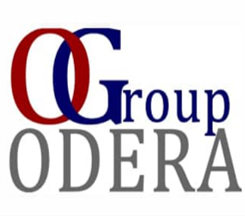Time of Flight Diffraction (ToFD)
Blended E-Learning
Name Of Tutor

Tutor Name
Add Your Heading Text Here
Course Price
Add Your Heading Text Here
Add Your Heading Text Here
Course Duration - 1 Months
Examination Duration: 2 Days
Examination Duration - 2 Days
This eLearning training is part of the ‘blended learning’ Time Of Flight Diffraction; a mix of eLearning and in-class practical training followed by certification to EN ISO 9712. The online modules can be studied when and where it is most convenient and at your own pace.
Add Your Heading Text Here
Add Your Heading Text Here
Add Your Heading Text Here
Blended Time of Flight Diffraction (ToFD)
Add Your Heading Text Here
Add Your Heading Text Here
Description
The eLearning training course is divided in four modules:
• Module 1: Basic Principles of Ultrasound and Ultrasound Testing
• Module 2: Principles Underlying ToFD
• Module 3: Data Analysis
• Module 4: Review
Each module contains:
• Pages explaining the underlying theory.
• Videos explaining the theoretical and practical aspects of Phased-Array Ultrasound Testing,
Silverlight interactive exercises in which the student can build a set-up, practice calibration and scanning and learn to evaluate real data.
• A test section for self-evaluation
At the end of your online training phase, an online test will enable you to decide whether you are ready for the classroom element of the course, or if you need further time to study.
When you have booked your online training, you will receive an email notification with your login details. You will then have 60 days from first login to complete your eLearning course.
Topic
Module 1: Basic Principles of Ultrasound and Ultrasound Testing
• Non-Destructive Testing (NDT)
• Sound versus ultrasound.
• Distance, velocity, cycle, material density.
• Sine wave, frequency, wavelength
• dB system
• The shell of an ultrasound instrument, ToFD probes, ToFD wedges
• Pulser/receiver, square pulse
• Wave propagation, scattering, absorption, energy spreading.
• Beam, sound field, beam diameter.
• Through transmission, pulse echo, angle beam, immersion, PAUT.
• A-Scan
• Structure and qualification of a procedure, training, acceptance criteria.
• Calibration blocks, couplant
• Marking on part, probe positioning
• Naming files, storing data
• Section’s test
Module 2: Principles underlying ToFD.
• Butt welds
• Digital instrument, pulser/receiver, digitizer, filters, gain
• Probes, frequency spectrum, signal waveform
• Wedges, hard wedges
• Scanner, encoder
• Huygens’ principle, diffraction
• Snell’s law, incident vs. refracted, critical angles
• ToFD A-Scan, phase shift, phase difference, averaging
• PCS, transit time, depth calculation, height calculation, position uncertainty
• Beam spread, beam spread in-wedge, beam spread in-part, frequency spectrum.
• Lateral wave, backwall, mode-converted backwall
• Dead zones, accuracy, resolution
• B-Scan, gray scale
• Whisker effect, parabolic cursors
• Non-parallel and parallel scans
• Multiple scans
• Influence of frequency on coverage, dead zones
• Influence of wedge angle on time scale, coverage
• Influence of PCS on dead zones, resolution, coverage
• How to optimize the digitizing frequency, filters, averaging, time window, sensitivity, PRF
• Calibration of the beam index point, velocity
• Scanning speed
• Wedge delay calibration, lateral wave straightening, lateral wave removal
• Interactive exercises on set-ups, beam index point and velocity calibration, scanning.
• Interactive exercises on wedge delay calibration and lateral wave straightening
• Section’s test
Module 3: Data Analysis
• B-Scan perspective
• Lateral wave, backwall and mode-converted backwall signals
• Effect of beam spread on depth and the backwall signal.
• Indication classification, probe position vs. height, angle vs. height
• Geometrical indications, double-V welds, pipes misalignment, different wall thickness
• Data quality, calibration, basic analysis, detailed analysis
• Signal start, grouping, point-like indications.
• Height and depth, top-surface breaking, bottom-surface breaking, embedded.
• Length and position, parabolic shape, elongated and curved.
• Interactive viewer, top-surface breaking, bottom-surface breaking, embedded.
• Interactive exercises on set-up, beam index calibration, scanning, data analysis
• Section’s test
Module 4: Review
• Hardware
• Scans and views
• Theory
• Set-ups
• Calibration
• Data analysis
• The defects
Specification
So that your computer can run the Phased Array eLearning modules you will need the following basic systems:
Operating System
Windows 10 or 11
Browser
Microsoft Edge or higher (PC)
Plugin:
Internet connection:
2 MBIT/s
ToFD Video Clip
Tester
To get an idea of what you can expect when you begin the course, and view some helpful tutorial videos, click the link below:
View the course taster.
Please use the latest version of the browser Internet Explorer with Silverlight installed to view the tasters.
Videos are best seen in full screen mode; exercises must be in full screen mode to work.


